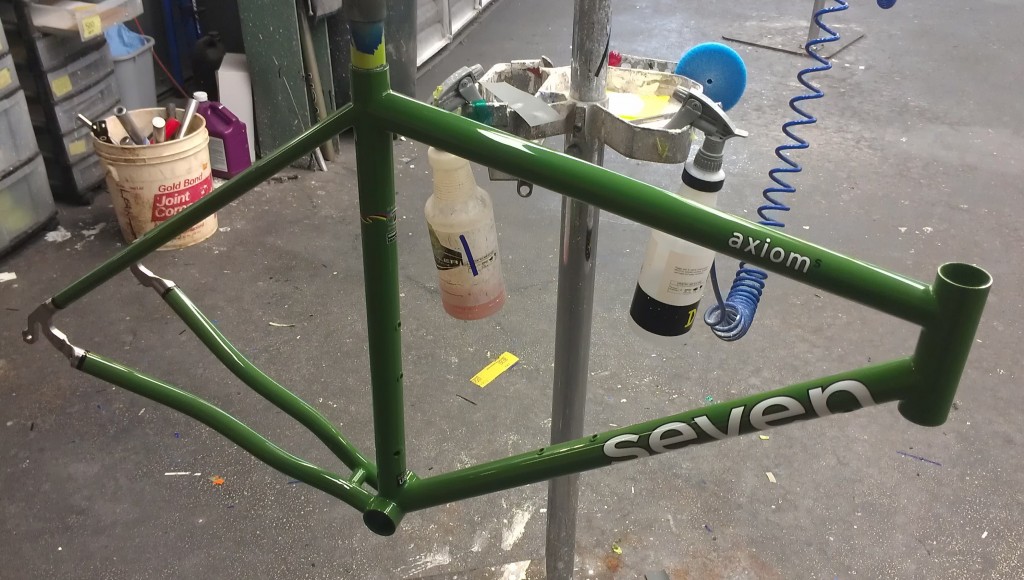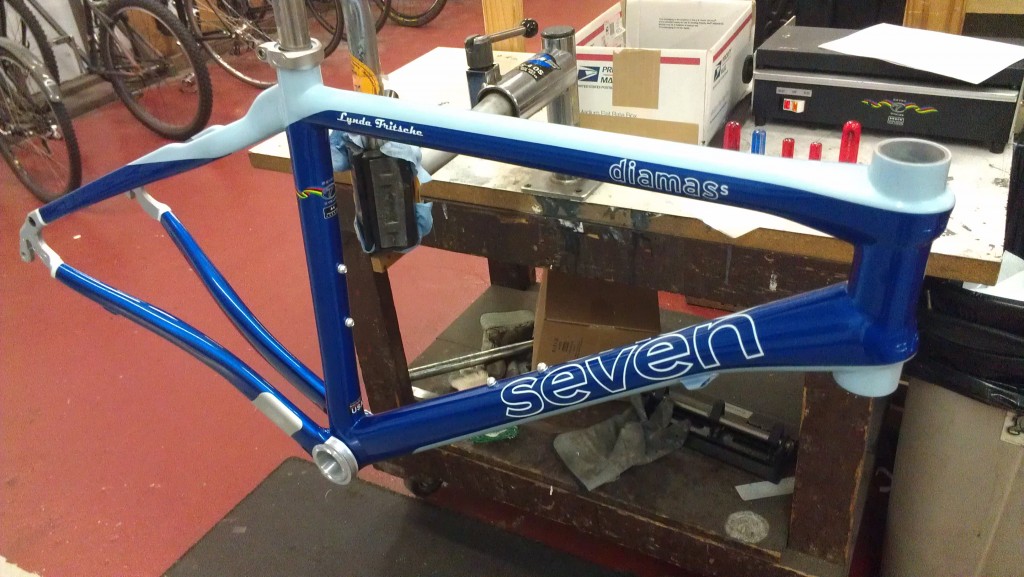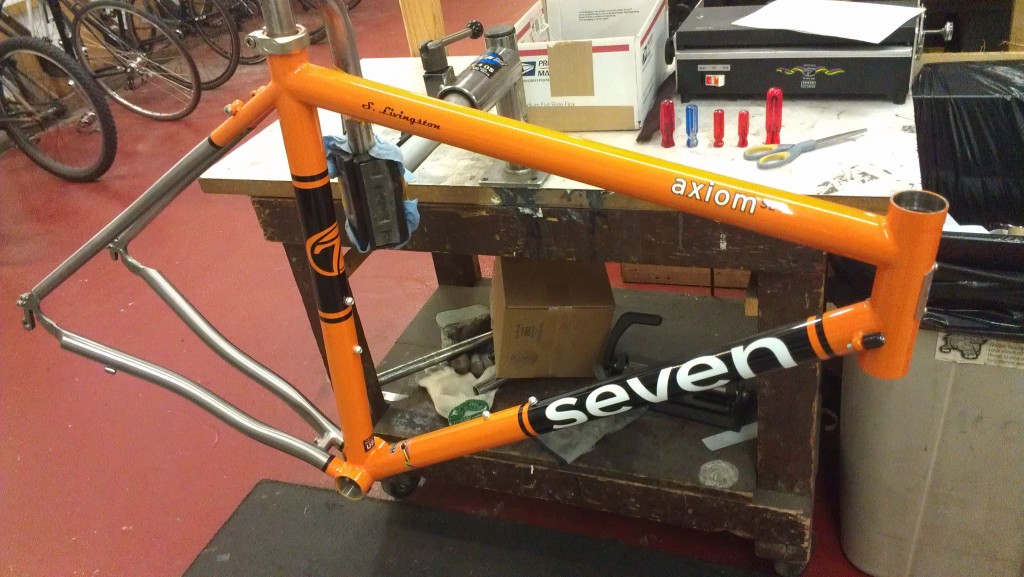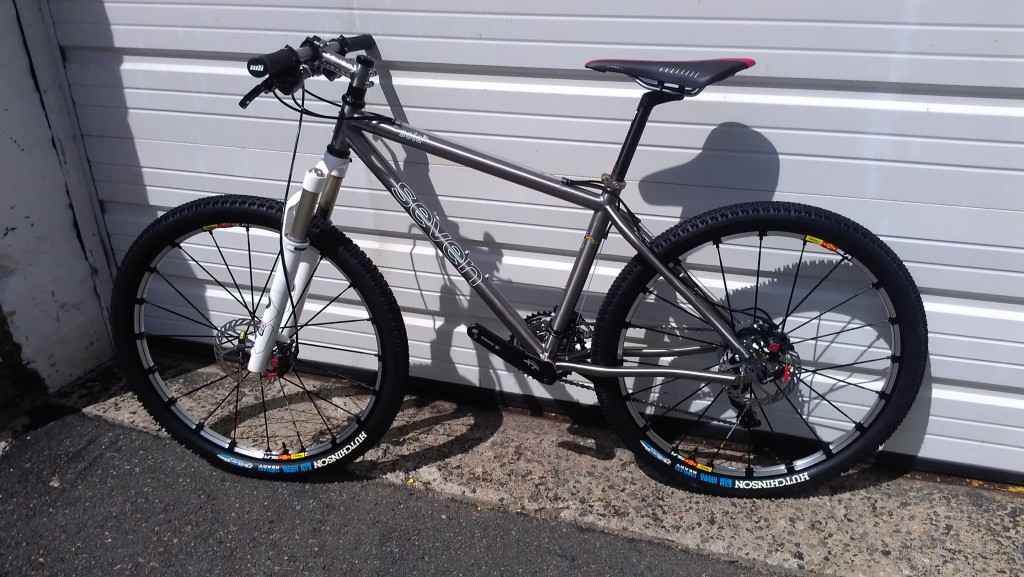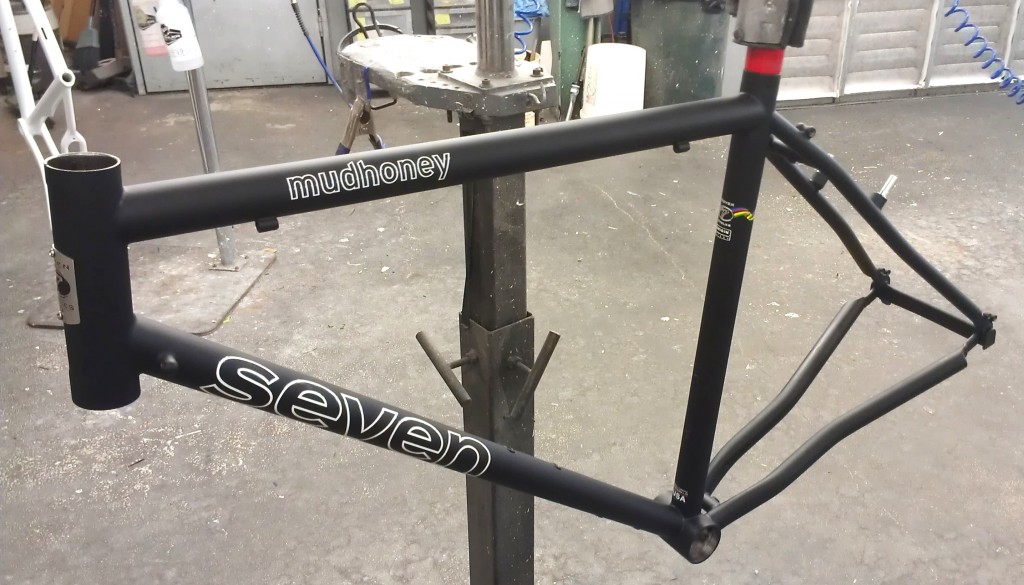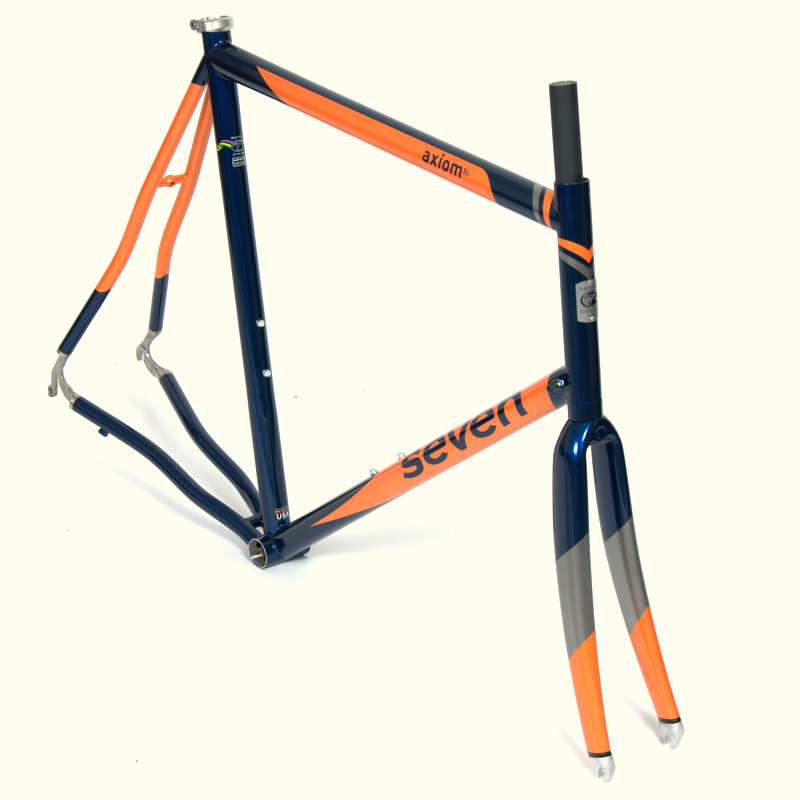This is our new Serrano Green on an Axiom S headed for the shipping dock. This, and a number of other new stock colors, are available now for paint-loving customization. See the full spectrum on our paint page.
Author: Seven
Current Work – Diamas S, Axiom SL, Resolute SLX
Timelessness
This is Seven Cycles #10, the tenth bike we ever built. It is 15 years-old. It has been all over the US, all over Europe. It has a lot of trail miles under its wheels. We built it for one of Seven’s original founders, who has gone on, happily, to live and ride the world.
Last week, it came back for refinish.
With more than 20,000 custom bikes behind us, it’s hard not to think about the first bikes out the door, wonder where they are, what they’re doing. Seeing this bike again was a real treat, and maybe it validates a decision we made a long time ago to offer only one finish for our bare Titanium frames, one that is a bit painstaking to execute, but turns out a frame that can be easily maintained and refinished for the lifetime of the bike, which, as it turns out, can be very long time.
Part of the process of customizing a bike for an individual customer is thinking about the future. Often riders know what they want in the moment. Sometimes they have a longer range vision of what they want their Seven to be, but most of the time it’s up to us to help them think through what they’re riding needs will be five, ten, or even fifteen years down the road. The hand finish is part of that thought and vision. It’s part of the value of what we do.
This bike will leave here today, destined for some far flung trail, and we look forward to seeing it back again, fifteen years further on, if only to see how we’ve done.

